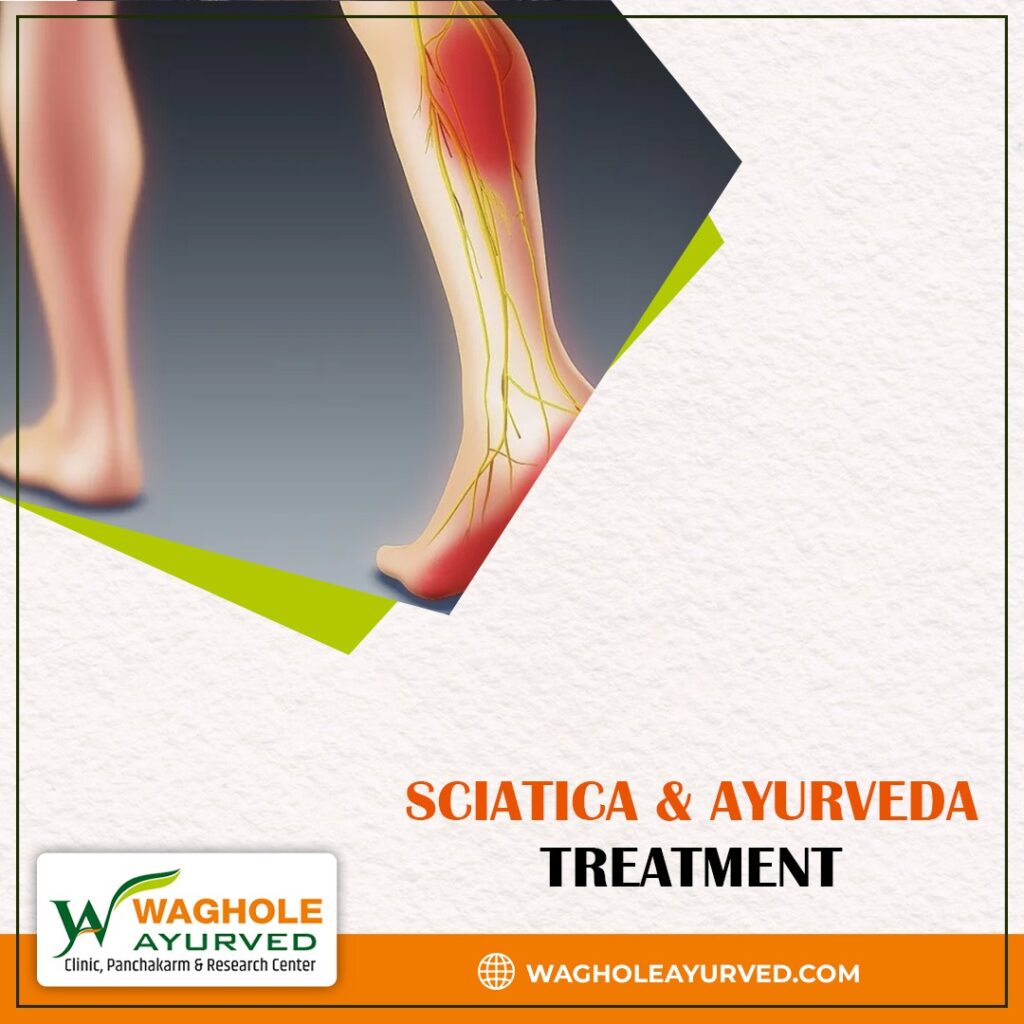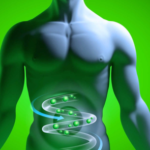
The term “sciatica” usually describes a symptom—pain along the sciatic nerve pathway—rather than a specific condition, illness, or disease.
Sciatica is pain going down the leg from the lower back.

This pain may go down the back, outside, or front of the leg.
The pain is often described as shooting.

Some use it to mean any pain starting in the lower back and going down the leg.
Typically, symptoms are only on one side of the body. Certain causes, however, may result in pain on both sides.
Onset is often sudden following activities like heavy lifting, though gradual onset may also occur.
Lower back pain is sometimes present. Weakness or numbness may occur in various parts of the affected leg and foot.
The pain is characteristically described as shooting or shock-like, quickly traveling along the course of the affected nerves.Others use the term as a diagnosis (i.e. an indication of cause and effect) for nerve dysfunction caused by compression of one or more lumbar or sacral nerve roots from a spinal disc herniation. Pain typically occurs in the distribution of a dermatome and goes below the knee to the foot.It may be associated with neurological dysfunction, such as weakness and numbness.
Causes
About 90% of sciatica is due to a spinal disc herniation pressing on one of the lumbar or sacral nerve roots.
Other causes Spondylolisthesis, spinal stenosis, piriformis syndrome, pelvic tumors, pregnancy and
Spinal disc herniation.

Symptoms
Pain going down the leg from the lower back, weakness or numbness of the affected leg.
Pathophysiology
Sciatica is generally caused by the compression of lumbar nerves L4 or L5 or sacral nerve S1.
Less commonly, sacral nerves S2 or S3 or compression of the sciatic nerve itself may cause sciatica.
In 90% of sciatica cases, this can occur as a result of a spinal disc bulge or herniation.
Intervertebral spinal discs consist of an outer anulus fibrosus and an inner nucleus pulposus.
The anulus fibrosus forms a rigid ring around the nucleus pulposus early in human development, and the gelatinous contents of the nucleus pulposus are thus contained within the disc.
Discs separate the spinal vertebrae, thereby increasing spinal stability and allowing nerve roots to properly exit through the spaces between the vertebrae from the spinal cord.
As an individual ages, the anulus fibrosus weakens and becomes less rigid, making it at greater risk for tear.
When there is a tear in the anulus fibrosus, the nucleus pulposus may extrude through the tear and press against spinal nerves within the spinal cord, cauda equina, or exiting nerve roots, causing inflammation, numbness, or excruciating pain.
Inflammation of spinal tissue can then spread to adjacent facet joints and cause facet syndrome, which is characterized by lower back pain and referred pain in the posterior thigh.
Other causes of sciatica secondary to spinal nerve entrapment include the roughening, enlarging, or misalignment (spondylolisthesis) of vertebrae, or disc degeneration that reduces the diameter of the lateral foramen through which nerve roots exit the spine.
When sciatica is caused by compression of a dorsal nerve root, it is considered a lumbar radiculopathy or radiculitis when accompanied by an inflammatory response.
Sciatica-like pain prominently focused in the buttocks can also be caused by compression of peripheral sections of the sciatic nerve usually from soft tissue tension in the piriformis or related muscles.
Diagnostic method
Straight-leg-raising test – This test done during a physical examination to determine whether a patient with low back pain has an underlying herniated disc, often located at L5 (fifth lumbar spinal nerve).

Technique – With the patient lying down on his or her back on an examination table or exam floor, the examiner lifts the patient’s leg while the knee is straight.
A variation is to lift the leg while the patient is sitting.However, this reduces the sensitivity of the test.
In order to make this test more specific, the ankle can be dorsiflexed and the cervical spine flexed. This increases the stretching of the nerve root and dura.
Interpretation –
If the patient experiences sciatic pain, and more specifically pain radiating down the leg (radiculopathy), when the straight leg is at an angle of between 30 and 70 degrees, then the test is positive and a herniated disk is a possible cause of the pain. A negative test suggests a likely different cause for back pain.
A positive straight leg test reproduces radiating leg pain. If it only causes back pain, then the test is negative.
One more test can be done
Femoral nerve stretch test – is a test for disc protrusion and femoral nerve injury.
The patient lies prone, the knee is passively flexed to the thigh and the hip is passively extended (reverse Lasegues). The test is positive if the patient experiences anterior thigh pain. This test is usually positive for L2-L3 and L3-L4 (high lumbar) protrusions, slightly positive or negative in L4–L5, and negative in cases of lumbosacral protrusion.
Medical imaging
Imaging modalities such as computerised tomography or magnetic resonance imaging can help with the diagnosis of lumbar disc herniation.The utility of MR neurography in the diagnosis of piriformis syndrome is controversial.
Differential diagnosis
Cancer should be suspected if there is previous history of it, unexplained weight loss, or unremitting pain.Spinal epidural abscess is more common among those with diabetes mellitus or immunocompromised or who had spinal surgery, injection or catheter; it typically causes fever, leukocytosis and increased erythrocyte sedimentation rate.
If cancer or spinal epidural abscess are suspected, urgent magnetic resonance imaging is recommended for confirmation.
Proximal diabetic neuropathy typically affects middle aged and older people with well-controlled type-2 diabetes mellitus; onset is sudden causing pain usually in multiple dermatomes quickly followed by weakness. Diagnosis typically involves electromyography and lumbar puncture.
Shingles is more common among the elderly and immunocompromised; usually (but not always) pain is followed by appearance of a rash with small blisters along a single dermatome.
Management
Sciatica can be managed with a number of different treatments with the goal of restoring a person’s normal functional status and quality of life.When the cause of sciatica is lumbar disc herniation (90% of cases), most cases resolve spontaneously over weeks to months.Initially treatment in the first 6–8 weeks should be conservative. More than 90 % of sciatica cases are managed without surgery.
Medication
Mostly we avoid to use of any kind of pain killer or muscle relaxant medicines of modern science.
We have such kind of Ayurvedic Remedies to get relief from pain.
50 % of patients are cure only by oral medicines , remaining 45 % required some kind of Panchakarma therapies along with oral medicines and only 5 % patients needs surgery or other kind of treatment of modern science.
In oral medicines – We have some Ayurvedic combinations to treat pain as well as cause of sciatica like spondylolisthesis, spinal stenosis, piriformis syndrome, pelvic tumors, pregnancy and spinal disc herniation.
In panchakarma –
We recommend Basti treatment with massage and steam to affected local area.
Along with Basti we do Raktamokshan of local area.
Basti – We have different kind of remedies for basti according to cause of Sciatica which we mention above.
Physical activity
We advice to Avoid physical activity and take a maximum bed rest for fastest recovery from complaints of sciatica.
We advice physical exercise after getting more than 70 % relief from complaints.
Surgery
If sciatica is caused by a herniated disc, the disc’s partial or complete removal, known as a discectomy, has tentative evidence of benefit in the short term. If the cause is spondylolisthesis or spinal stenosis, surgery appears to provide pain relief for up to two years.
We also advice to take ayurvedic medicines even with surgery to avoid recurrence.
To avoid recurrence
We recommend some exercise to strengthen the lumbar vertebrae like Vrikshasan, Trikonasan, Marjarasan, Shalabhasan, Dhanurasan, Baddhakonasan, Balasan, Natrajasan, Setu bandhasan, Matsyasan, Bhujangasan, Pavan muktasan, Hastpadasan, Naukasan.




